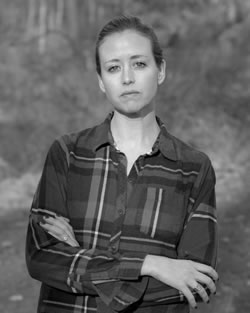|
In my early days of writing stories, I somehow came to operate under the following assumption: whenever you amassed 200 pages worth of fiction, your work would undergo a miraculous transformation into a book. I took my first stab at writing a story collection in college. The result was a 210 page manuscript entitled Hush, an ungainly mishmash of domestic realism, ill-conceived Beckett homages, and flash fictions about trees with real human feelings (true story!). While I can think of many excellent collections that demonstrate great stylistic and technical range, the "eclectic" approach was not working for me.
A big part of my problem was that I was attempting to write a collection without having read very many collections. I had read plenty of stories, but how many books of stories? When I started studying collections in their entirety, I quickly understood a good book of stories was much more than a random grouping somewhere in the neighborhood of 200 pages in length. Rather, the stories were strategically curated and arranged. The presence of one complicated and enhanced the life of another. When I finished Denis Johnson's Jesus' Son and Lorrie Moore's Like Life, it was impossible to imagine those collections existing without all of those stories just as they were, in their precise form and order.
And so it was that I began tracking the organizing principles of collections: Jesus' Son was linked by character; Lost in the City was linked by place. The stories of Amy Hempel and Joy Williams were connected in less concrete but equally compelling ways; it was a tonal quality, a worldview, that made their stories hang together. While it was clear that a collection didn't need explicit links, a certain level of unity was required. The stories needed to be in conversation. They needed to interact and echo. When a collection succeeded, it was often strikingly apparent in the final line. For instance, the ending of Jesus' Son, "I had never known…that there might be a place for people like us," enlarges every word that has preceded it, to tremendous effect. The final line of Karen Russell's St. Lucy's Home For Girls Raised by Wolves—"'So,' I said, telling my first human lie. 'I'm home.'"—resonates beautifully with Russell's fabulist explorations of coming of age.
When I revisited Hush, I could see the stories had nothing in common except for the fact that I had written them. I had a group of stories, not a collection, and the more I understood what made a book of stories work, the more I understood I hadn't the faintest idea how to write one.
In 2005, I moved to Boston to enroll in the M.F.A. program at Emerson College and decided to stop thinking about a book. I wrote what I was moved to write, taking each story on its own terms. I was coming up against how hard it was to write one good story, let alone a book of them, and workshop deadlines kept me focused on the immediate task at hand—this sentence, this paragraph, this story. After my first year, however, I couldn't help but notice some similarities in my new stories: one featured a botanist who crossed paths with a group of men hunting the Loch Ness Monster; in another, a failed actress took a job as a Bigfoot impersonator. Where were these stories of creatures and faraway lands coming from? I had no idea. But I felt I might be onto something and book fever struck once again.
This time, I approached the idea of a book with more reserve. I made a pact with myself that I would continue to take things story-by-story. This meant writing whatever I wanted to write at that particular moment, even if it had no connection whatsoever to the bundle of stories I hoped might one day make a collection. This was helpful and freeing, as I can attest that the few times I did begin a story by thinking something like "this collection could really use a Yeti," the result was irredeemably bad. It was important to not force the stories, to let them bubble up in their own time, driven by their own urgency and need.
More stories in the monster-y vein followed. A collection, What the World Will Look Like When All the Water Leaves Us, was formed. On the surface, the stories were connected by subject and milieu—myths, creatures, foreign locales—and by the emotional predicaments of the characters, women struggling with loss and obsession. With so much thematic overlap, there can be a very fine line between "coherence" and "redundancy," and so I tried to make sure each story was turning over a slightly different kind of stone. I made lists of all the first and last lines to help determine the arrangement. I felt a shift when I altered the order or re-wrote an ending or cut a character. I came to feel that their relationship was symbiotic, interdependent. What the World Will Look Like When All the Water Leaves Us was my M.F.A thesis and became my first published book; this November will see the publication of a second collection, The Isle of Youth.
One of the greatest joys of story collections is the way each one can operate entirely on its own terms. In the collections I most admire, I am left feeling as though I have been roaming a very large piece of property—looking behind a tree here, walking up the steps of the house there, climbing through a back window, peering down into a well. The stories are micro-worlds but are contained by an overarching fictional universe, the parts inseparable from the whole. What has always thrilled and terrified me, in equal measure, about fiction is that if we do it well enough, we can have any kind of world we want. It is all ours to make.
|


